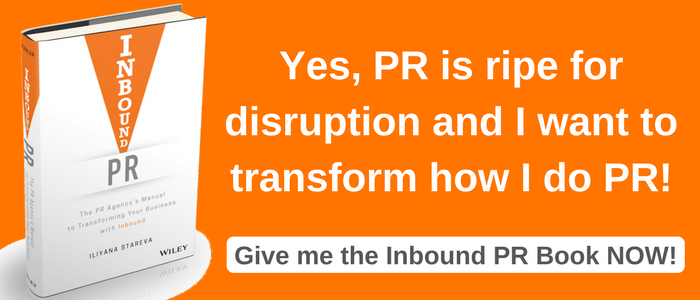 Organisational structure and time inefficiencies, service packages development and new hire training and onboarding are three challenges that agencies face when they start to scale. We covered this in the first part of this series, if you missed it, read it here.
Organisational structure and time inefficiencies, service packages development and new hire training and onboarding are three challenges that agencies face when they start to scale. We covered this in the first part of this series, if you missed it, read it here.
Today, we're going to look at three more challenges that agencies face when they've grown past five people and have a good number of clients on retainers or long-term engagements. These include:
- over-servicing but being underpaid and failing to ask for what their worth is;
- lack of a documented account management process so that each new account manager has a blueprint to start doing their job and the leader doesn't need to be involved in everything from scratch with each new person on that team;
- lack of a renewal management process and a structured way of securing that the client is happy and agrees to your plan for the future to stay with you.
Let's get started.
When Agencies Start to Scale: 3 More Key Learnings & Fixes
1. How Not to Over-service and Stay Underpaid by Mapping Out Your Client Lifecycle
When agencies become comfortable with delivering inbound marketing, they fall into the trap of forgetting about all the little pieces that make up their services and so end up overdelivering but being underpaid.
A reason why agency people don't fully grasp the range of services offered and are unable to say "no" to irrelevant work is that agencies barely ever map their client lifecycle. This leads to over-servicing and losing money by not getting paid for the additional services they end up offering and for the time that employees waste on this instead of on their core activities from the retainer agreement.
That is the case with a lot of my agency partners at HubSpot.
With some, it can be driven by an internal lack of understanding of what exactly is it that we offer as an agency or specialise in. When this happens, team members revert to the "we can do everything for everyone" out of insecurity. (And we all know this is not a position you want to be in when you want to be seen as an expert.)
With others, it's all about the lack of clarity on all the little pieces within their services and the need for new processes for a recently expanded team.
To uncover these gaps, I like to map out the entire client lifecycle with my partners by asking them a lot of questions around what months 1-3, 4-6, 7-9, 10-12 look like in detail and write all of this on the board (or interactive tool such Realtime Board if you are not face-to-face).
To give you an example, if you start with months 1-3, dig first into month one and list absolutely every little action everyone in your team does for the client. So buyer persona development is not just that but includes client meetings, preparation for them, follow up on them, then research, interviews, surveys, analysis of all the info, finalising personas, presenting them to the client (again preparation, running the meeting, follow up) etc. So you see how this becomes a lot? And you are probably not even considering every piece here.
Continue listing everything for each service such as content, blogging, conversation paths, email marketing etc. for each month and don't forget client-facing touchpoints such as meetings and calls including the things you do around them as well.
If you've never mapped out your client lifecycle, alone by listing the first three months in absolute detail will probably allow you to uncover how you over-service but are not charging for a lot of the things that you do.
I'm not a big fan of the hours conversation but in such a situation it's necessary because as you dig into each service item throughout the client lifecycle, you might not even realise or know but just assume how much time you need for many of the pieces you list. To top this, you may have even forgotten about some of the things you do (because you have learnt to do them in your sleep and take them for granted) or how long they take to complete. And so you end up not getting paid for many of the forgotten or taken for granted services.
I promise you, this exercise will surprise you so go ahead and map out the full 12 months with a client.
Key learning: When agencies are unaware of all the little pieces that make up their services, they end up overdelivering and not charging correctly. Simply listing what each service consists of while mapping out the client lifecycle for a full year will enable them to become better at time tracking as they can input each service in their tracking software correctly. This will also allow them to price and package better for the future.
2. How to Build an Account Management Process
In the early stages of an agency, the founder or the owner usually is the person who does everything - from selling to servicing, from content to running accounts etc.
As the agency scales, luckily the owner can now hire people and he/she can focus on what their job really is, namely to sell and lead the team to enable growth.
This is when the need for a clear and documented account management process becomes apparent. The CEO needs to hand over all accounts to the newly hired account or project managers who will be the new client POCs.
But until now the CEO has done this whole client management thing their way or how they saw fit so how are our new people supposed to handle this moving forward?
Training your new hires is one thing, giving them clear written guidance that they can self-use is another.
A structured, well-documented account management process is what makes your agency efficient internally and professional externally because it changes the client dynamic and the client views you as someone who knows what they're doing.
An account management process will in the first place list the necessary client-facing touchpoints such as:
- Weekly/bi-weekly client calls for the month between the agency account manager and the marketing manager or POC at the client, each one with specific goals and topics to cover. That way, your account managers have a structure of how to organise their work and manage clients and also have specific KPIs that you can track (e.g. when they time track calls, notes taking with client Google Drive folders or your project management tool, delegation of tasks to the team, monthly reporting prep etc).
- Quarterly top management/C-level meetings between the agency owner/CEO, the agency account managers and the company's CEO/owner to go over goals, monetary results (value) as well as red flags such as marketing managers not closing the loop on closed deals thanks to the provided SQLs by the agency. These meetings are important because the agency owner should not completely cease contact with clients and to also allow them to show the results they're achieving, to secure the next quarterly retainer (hence quarterly not monthly meetings) and ideally to upsell.
The weekly/bi-weekly calls can range from 10 minutes to 30 minutes and should each ideally have a focus. They should be prescheduled in the calendar and have an agenda. For example, the first call of the month can focus on covering the plan for the month; the second could go through ideas and a bit of brainstorming of what to do next; the third one would go through the KPIs set out in the first call and whether we're on track and if not, what actions to take; the forth one would then go through the results for the month and so on. Use your client lifecycle to give you cues on how to structure this.
The other key factor within this process is to have a playbook for each of those calls. These playbooks are used internally and help people prepare for and run these calls and meetings. These would include things like goal and agenda for the call, example questions to ask, next steps and homework, resources etc. It's basically the step-by-step guide that you read before such a call which you've never done before and you learn how to do it. (You can store all of this very easily into your project management tool or simply in Google Drive)
In addition, there needs to be a standardisation of templates that are used throughout the engagement, e.g. buyer persona templates, reporting templates and slides for monthly reports or quarterly reports etc.
The main goal with all of this is not to reinvent the wheel for each new client or each new employee.
Key learning: agency owners and account managers need to learn that it's not just important to speak to clients regularly but to actually have a structure and a process behind it that visualises where they're going with the client and why they're doing what they're doing. Just as we approach onboarding of our customers, agencies should too map out what service delivery and client management look like for them from a day-to-day operational perspective. This needs to include the type of calls/meetings they should be having with clients as well as the goals for those, what needs to be covered, what the action points would be and who needs to be in each meeting, while carefully documenting all of this for future employees or new POCs at the client as well as for tracking results.
3. How to Create a Renewal Management Process
Once you have your account management process lined up and a well-document client lifecycle, you can now look at all the touchpoints that are important for renewing your client.
By knowing what happens each month and having mapped out a client management process with quarterly top management meetings, you will have better visibility into when you need to start preparing for the renewal of each client.
Where agencies tend to fail here is success reporting. The weekly or monthly metrics reportings with the client's marketing managers are important but they usually cover tactics such as blogs published. You should be having regular strategic growth meetings with the C-level, ideally face-to-face. That's why I pressed for the quarterly top management meetings as part of your account management process and you need to have your client bought into this from the very beginning of signing the agreement with you. This needs to be part of the SLA and your client's CEO needs to know what the implications would be if they were not present at those meetings.
Your account managers need to start thinking about the renewal 4 months before that date (so the 9-month mark if you are on a 12-month retainer) as prep for the regular quarterly top management meeting in order to secure the renewal and have a vision of how they can bring even more value/results (i.e. upsell). You can easily have a block in your calendar to remind you that the time is coming and for you to start preparing.
If you fail to have such conversations, it's your own missed opportunity to communicate value and results and to offer additional services for more revenue. This is when the renewal conversation happens in a strategic way to identify the future of the agency-client relationship and the mutual growth.
And you don't need to wait until the 9-month mark to speak about the future. Use each of the quarterly meetings to walk the talk and show your client how much you're doing for them, how much their investment has been worth it and how much more they can grow with you. That way, the renewal will just happen naturally.
For more on client delight, take a look at this blog post.
Key learning: Very often agencies are not approaching the renewals of their clients in a strategic way. In their service delivery process, agencies need to include the client renewal not only as an FYI conversation but as one that goes over what has been achieved during the engagement, how the agency was involved, what value they provided and what the future looks like for both parties. Ideally, value reporting will happen regularly and before the renewal becomes pressing as part of ongoing quarterly C-level growth meetings with the client that are embedded within your account management process.
What are the challenges that you have faced as an agency starting to scale?







